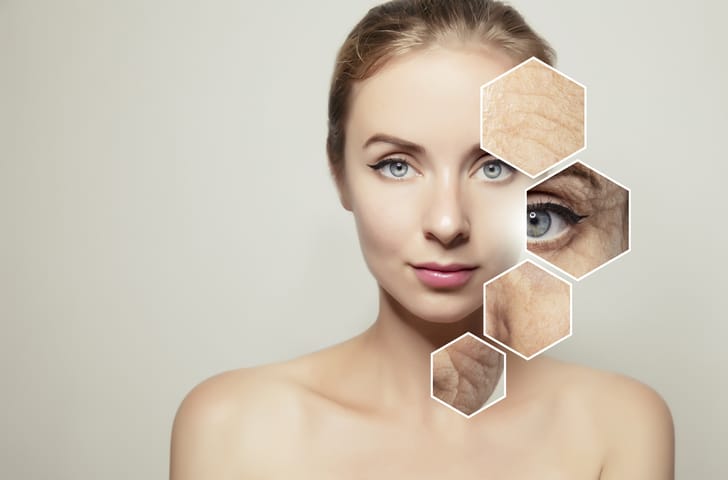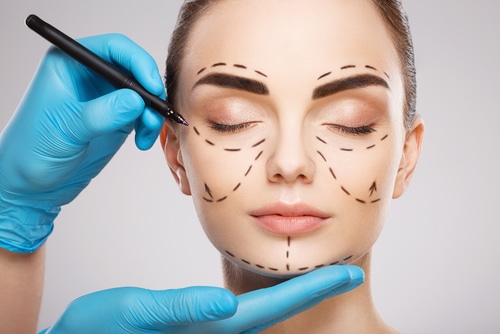Full cheeks and smooth skin is all you can ask for. The lucky few scored the gene pool with natural features. Though, the rest of us needs help from our local dermatologist. The key is Botox vs Restylane.
Regardless of age or skin complexion, dermal fillers are the right of passage to look your absolute best. Restylane and Botox are the two most common injectable treatments. Are you not sure which one is right for you? Here is everything you need to know when weighing Botox vs Restylane.
What Is Restylane?
Restylane is the second most widely used cosmetic injectable. Hyaluronic acid, also known as hyaluronan, is the primary ingredient. In fact, the clear, sticky substance naturally occurs in the body to keep you hydrated.
Most individuals opt for Restylane to eliminate their facial scars and wrinkles. The active ingredient causes cheeks, lips or nasolabial folds to appear plumper and adds onto symmetry. While you can use hyaluronic acid as your moisturizer, it only restores volume into your skin via injection.
What Is Botox?
Botox is the most widely used cosmetic injectable. The solution contains botulinum toxin, which blocks signals between nerves and muscles in order to freeze muscle activity. Dermatologists inject the substance into your desired areas with a fine needle.
Botox is typically the option for those treating wrinkles and facial creases. Moreover, it mitigates excessive sweating, overactive bladders, neck spasms, and other skin-related problems. In terms of convenience, you can complete the outpatient procedure within a single visit.

Pros and Cons of Both
Botox vs Restylane: Pros of Restylane
Restylane is best suited for static wrinkles. These linear figures are solely visible when your face is relaxed and expressionless. Static wrinkles appear as small sunken areas, while injectables act as a facial filler to induce fullness and symmetry.
Restylane is ideal for long-lasting results. Inevitably, the effects will diminish through time, though, a single series of injections lasts for 6 to 18 months, a greater duration than that of Botox.
Botox injections last for approximately four months and its effects can take a few days to appear. With Botox, 80 percent of patients notice moderate to significant improvements in their skin quality, while Restylane records an 80 percent success rate.
The top cosmetic injectables, Restylane and Botox, have fast procedures. You receive several injections in a single visit to your dermatologist, and you’re ready to head home on the very same day. On the other hand, the operation typically lasts for less than an hour, and recovery takes less than 24 hours.
One of the factors that play into the rapidity, is the minimally invasive procedures. Dermatologists use fine needles to inject the fillers into your desired areas without incisions. This causes Restylane to be an attractive option in comparison to more intense skin treatments.
Botox vs Restylane: Pros of Botox
The beneficial side to Botox vs. Restylane is that the former is more dynamic. Its ability to reduce wrinkle visibility and movement prompts it as the superior method. Examples of dynamic wrinkles include lines on the forehead and surrounding the mouth.
For Botox, the benefits are not limited to wrinkles. Botox treats a wide range of conditions, from migraine pain to Bells Palsy. In addition, it prevents excessive or unpredictable sweating for patients with hyperhidrosis.
Treatment is simple and straightforward for all of these conditions. The injections block signals from the brain to the targeted muscles. The Botox acts as a shield for your sweat glands, preventing unwanted moisture and perspiration. The same principles apply for smoothing out skin or assuaging wrinkles.
The side effects of Botox vs. Restylane are remarkably similar. Patients may experience swelling, tenderness and/or bruising. Though, the side effects of Botox are briefer. Any lingering sensations from treatment may last for a few days, while Restylane side effects can persist for up to 7 to 18 days.
In terms of costs, both treatments range within a similar price range, with Restylane placing slightly higher. The average Botox treatment is cheaper at $550, while Restylane at $750, based on self-reported data.
Botox vs Restylane: Cons of Restylane
A Restylane filler vs. Botox is not dynamic. It cannot fill in fine lines, nor forehead furrows, as efficiently as Botox does. Restylane is recommended for creating plumpness, treating acne or facial scarring.
There is a chance of an allergic reaction to Restylane. Most patients do not experience allergic reactions, however, risks should always be minimized before seeking treatment. Dermatologists do not recommend the procedure for patients on blood-thinning medication as well.
Botox vs Restylane: Cons of Botox
The most significant risk of Botox is the chance of poor treatment. An unqualified dermatologist will leave your face appearing unnaturally stiff and plastic, which negates its beneficial purposes. Find a qualified and credited injector, such as a plastic surgeon, registered nurse or a board-certified dermatologist.
Proper treatment requires the utmost precision and accuracy upon execution. The injector must walk a fine line when determining dosage amounts based on your existing conditions, height, weight, and sex. You should be capable of making facial expressions without the worry of visible evidence of cosmetic work.
Botox may lead to a range of potential allergic reactions. Patients should refrain from Botox use if you are sensitive to botulinum toxin, have a neuromuscular disorder, or currently under pregnancy. Consult your dermatologists regarding potential allergic reactions prior to treatment.
Which to Choose: Botox vs Restylane?
There are more similarities than differences when comparing Botox vs Restylane. Both FDA-approved treatments require a complete series of injections within a single visit. Both significantly improve skin quality in a matter of days and lasts for several months. The cost of Botox vs Restylane are similar, ranging from $25 to $1,600, depending on the number of injections.
Truly, the optimal choice between Botox vs Restylane, is the option that works for you. Both cosmetic treatments embody an equal success rate. However, Botox is ideally suited for treatments around the forehead and under eyes, while Restylane is preferred for desired fillers surrounding the mouth, cheeks or lips.

Botox carries more dynamic capabilities and scores popularity over Restylane. A Restylane filler vs. Botox lasts longer, which leads to conserving time and money between treatments. Both cosmetic fillers offer top tier quality and effective results with minimal side effects, either way — you cannot go wrong.
Are you still not sure which one to choose between Botox and Restylane? Contact Soma Plastics today for consultation!

